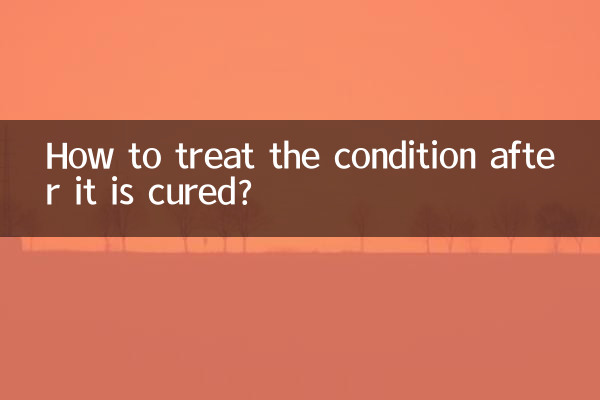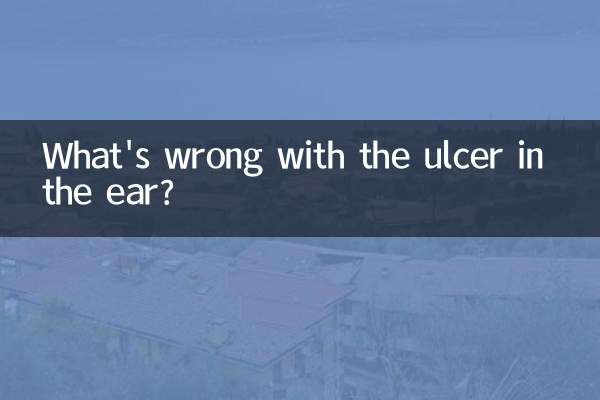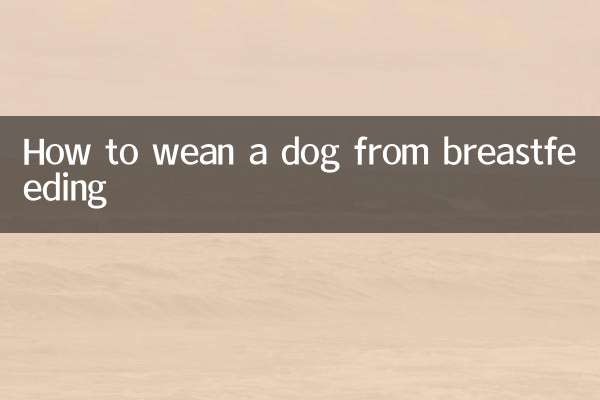How to treat the condition after it is cured?
Recently, pet health has become a hot topic, especially the treatment and rehabilitation of canine parvovirus. Many pet owners have many questions about follow-up care after their dogs recover. This article will combine the hot content on the Internet in the past 10 days to provide you with structured data and suggestions to help your dog scientifically condition.
1. Core conditioning points during parvovirus recovery period

| conditioning dimension | Specific measures | Things to note |
|---|---|---|
| Diet management | Eat small and frequent meals (4-6 times a day) and choose low-fat and easily digestible prescription foods | Avoid meat/dairy products in the early stages of recovery |
| Environmental disinfection | Use a 1:32 bleach solution for daily disinfection | Need to keep the environment dry |
| motion control | Limit strenuous activities for the first 2 weeks of recovery | Allows for short walks of 5-10 minutes |
| immune reconstitution | Check antibody levels 21 days after recovery | Need to catch up on core vaccines |
2. Nutritional supplement plan (according to recovery stage)
| recovery stage | Recommended food | nutritional supplements |
|---|---|---|
| 1-3 days (transition period) | Rice soup/glucose water | electrolyte solution |
| 4-7 days | Pumpkin puree + white porridge | Probiotics for pets |
| 8-14 days | Low-fat prescription canned food | B complex vitamins |
| 15 days+ | Gradually return to normal diet | omega-3 fatty acids |
3. Top 5 recent hot topics of concern
According to data analysis from major pet forums, the rehabilitation issues that pet owners are most concerned about currently include:
| Ranking | High frequency problem | Professional advice |
|---|---|---|
| 1 | Time for defecation to return to normal | It usually takes 7-10 days to gradually take shape |
| 2 | hair restoration problem | Supplement lecithin, effective in 2-3 months |
| 3 | Can you interact with other dogs? | It is recommended to quarantine for at least 1 month |
| 4 | weight gain rate | Weight gain should not exceed 5% per week |
| 5 | Relapse prevention measures | Environmental disinfection lasts for 2 months |
4. Monitoring indicators during the recovery period
It is recommended that pet owners record the following data every day and seek medical attention promptly if any abnormalities are found:
| Monitoring items | normal range | Measurement frequency |
|---|---|---|
| body temperature | 38-39℃ | 1 time in the morning and once in the evening |
| water intake | 50ml/kg/day | daily total |
| Food intake | Gradually return to 80% normal volume | Meal record |
| Number of bowel movements | 2-3 times/day | every observation |
5. Special precautions
1.It is strictly prohibited to take a shower in advance: Wait at least 2 weeks after recovery. The water temperature needs to be kept around 38°C to avoid stress.
2.Medications are gradually discontinued: Antiemetic/antidiarrheal drugs should be reduced step by step under the guidance of a veterinarian and should not be stopped suddenly.
3.psychological care: 60% of recovered dogs will exhibit anxious behavior, and it is recommended to use a pheromone diffuser to assist in soothing them.
4.Review time point: Routine blood examination must be performed on the 7th and 21st days after recovery to monitor the recovery of white blood cells.
Through scientific and systematic conditioning, the vast majority of rehabilitation dogs can fully return to health within 1-2 months. It is recommended that pet owners remain patient and strictly follow medical advice to help their dogs get through this critical period.

check the details

check the details